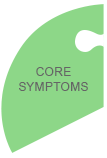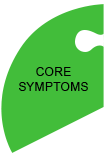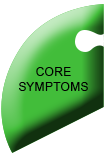
Technology and Device-Based Therapies























Technology-based device and procedural therapies for autism vary widely. Many of these therapies are still emerging, with few studies to prove their effectiveness.
Below are a few examples of technology and device-based emerging therapies:
 In the 1960s and 1970s, interventions were shown to improve epilepsy-related aggression when doctors targeted the amygdala, a brain region associated with emotional learning. In the January 21, 2013, issue of the journal Frontiers in Human Neuroscience, researchers published a study exploring the hypothesis that stimulating the amygdala would alleviate self-injurious behavior (SIB) related to ASD. They surgically implanted electrodes in the amygdala of a 13-year-old boy suffering from Kanner’s autism, also referred to as early infantile autism, and severe SIB. When the electrodes placed in the amygdala’s basolateral section were stimulated, the boy made significant strides in overcoming SIB as well as the emotional, social, and cognitive deficits related to autism.1
In the 1960s and 1970s, interventions were shown to improve epilepsy-related aggression when doctors targeted the amygdala, a brain region associated with emotional learning. In the January 21, 2013, issue of the journal Frontiers in Human Neuroscience, researchers published a study exploring the hypothesis that stimulating the amygdala would alleviate self-injurious behavior (SIB) related to ASD. They surgically implanted electrodes in the amygdala of a 13-year-old boy suffering from Kanner’s autism, also referred to as early infantile autism, and severe SIB. When the electrodes placed in the amygdala’s basolateral section were stimulated, the boy made significant strides in overcoming SIB as well as the emotional, social, and cognitive deficits related to autism.1
This study, the first to demonstrate such results in a patient, suggests that the amygdala—especially its basolateral section—is important for understanding behaviors related to ASD, and could provide a potential target in its treatment.
 On July 2, 2014, the digital journal PLOS ONE published a paper evaluating an emerging technique to address anxiety in young people with ASD. For the study, nine boys aged 7 to 13 underwent cognitive behavioral therapy (CBT)—an existing treatment approach shown to reduce anxiety associated with ASD—together with five sessions in a proprietary virtual reality environment (VRE). Anxiety questionnaires administered periodically in the 16 months following the treatment revealed that eight of the nine participants were newly able to tackle their specific phobias, and four overcame them completely.2
On July 2, 2014, the digital journal PLOS ONE published a paper evaluating an emerging technique to address anxiety in young people with ASD. For the study, nine boys aged 7 to 13 underwent cognitive behavioral therapy (CBT)—an existing treatment approach shown to reduce anxiety associated with ASD—together with five sessions in a proprietary virtual reality environment (VRE). Anxiety questionnaires administered periodically in the 16 months following the treatment revealed that eight of the nine participants were newly able to tackle their specific phobias, and four overcame them completely.2
This study lends support to previous findings that CBT can be effective in reducing anxiety in young people with ASD. Importantly, a combination therapy of CBT and VRE could be more effective than a single therapy. Future research using a control group could validate CBT in conjunction with VRE as an effective therapy to address specific phobias.
 Anther device-based approach includes the use of a child-sized robot to help children with autism learn how to interact with people—research conducted by scientists at the Robotics Research Lab of the University of Southern California. According to the researchers, a robot may be less intimidating than a person to a child with autism. The pilot studies are promising, showing an increase in social behaviors that are normally lacking in children with autism.3
Anther device-based approach includes the use of a child-sized robot to help children with autism learn how to interact with people—research conducted by scientists at the Robotics Research Lab of the University of Southern California. According to the researchers, a robot may be less intimidating than a person to a child with autism. The pilot studies are promising, showing an increase in social behaviors that are normally lacking in children with autism.3
To learn about apps that focus on the needs of those with autism, please visit our comprehensive list of autism-based apps.
| Evidence Legend | |
|---|---|
 |
Research-supported – a therapy with the highest level of evidence for safety and effectiveness based on rigorous scientific research and well-controlled clinical trials. |
 |
Promising – a therapy that is being actively researched in scientific studies and clinical trials with promising results |
 |
Suggestive – a therapy that has been known for some time but is not actively researched at present OR a novel therapy having current research of one or two preliminary studies showing suggestive results |
 |
No evidence available – a therapy that lacks any evidence-based support for effectiveness or safety |
| References: |
3. Chris Woolston. (2011). “Robots built to help autistic children.” Los Angeles Times. Access online: http://articles.latimes.com/2011/oct/17/health/la-he-autism-robots-20111017 |

